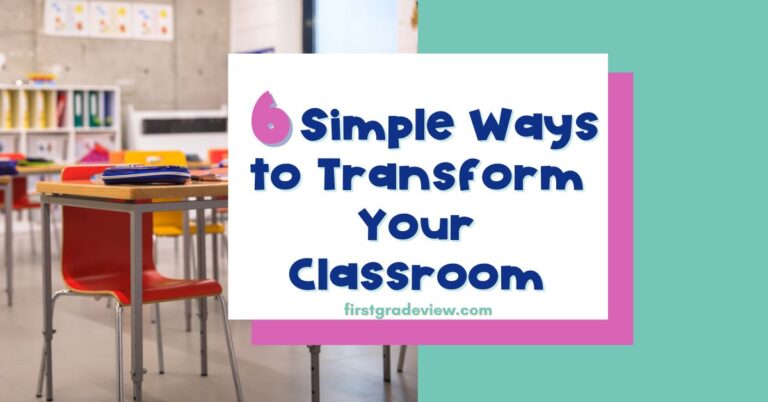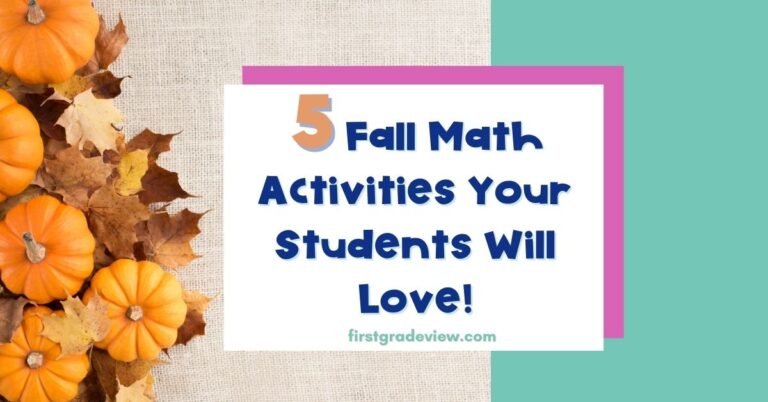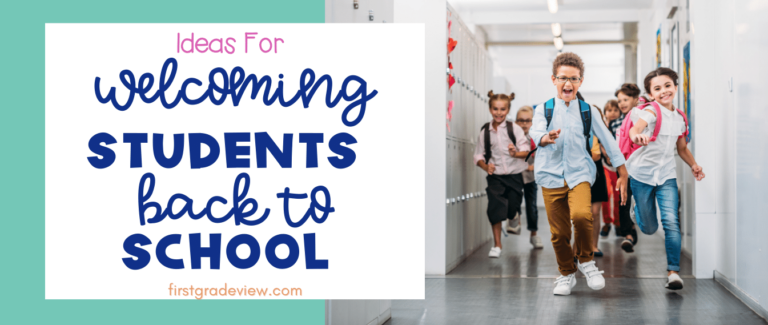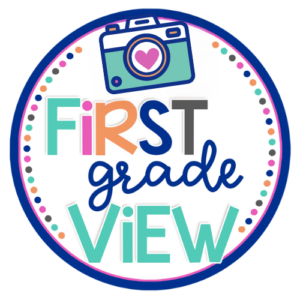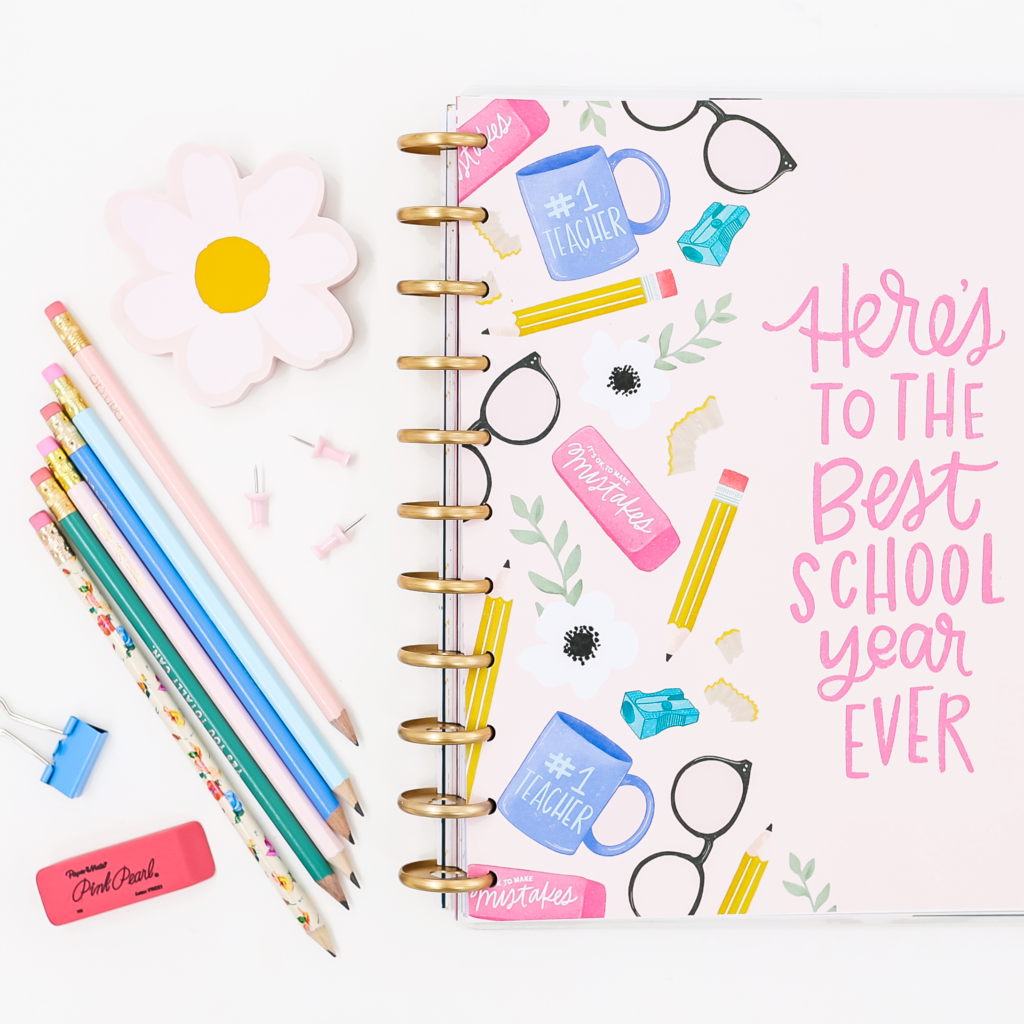Imagine this: It’s the first week of school, and your inbox is already overflowing with emails from concerned parents, each one asking about different aspects of your classroom routine. As a K-2 teacher, you know you don’t have time to be constantly fielding questions while trying to manage a bustling classroom. But what if there was a way to head off these questions before they even arise? With a few small tweaks to your parent teacher communication strategy, you can keep parents informed and involved without being flooded with emails. In this post, I’ll share five tried-and-true tips to help you communicate consistently and effectively with parents, setting the stage for a smooth and collaborative school year.

Why is Parent Teacher Communication Important?
Just as our little learners need a strong foundation to build their skills, our classroom communities thrive on solid, open communication between home and school. When parents and teachers are on the same page, it creates a supportive network that helps students feel more secure and understood. Plus, regular communication can help nip any potential issues in the bud before they turn into bigger problems. It’s the glue that keeps everyone informed, involved, and working together to make the school year a success!
Parent Teacher Communication Tip 1: Class Website
Years ago, my district mandated that all teachers create a classroom website. Initially, I wasn’t thrilled about adding another task to my already full plate, but now, I couldn’t be more grateful! My classroom website has become the go-to spot for parents to get information, check out our classroom newsletter, find homework assignments, order hot lunch, and so much more! Once parents get used to visiting your classroom website, you’ll notice a significant drop in the number of email questions. If your district doesn’t provide a website, no worries! You can easily set up and customize one using Google Sites. And if you need a bit of help with the tech side, check out this helpful YouTube video by A Pocketful of Primary.
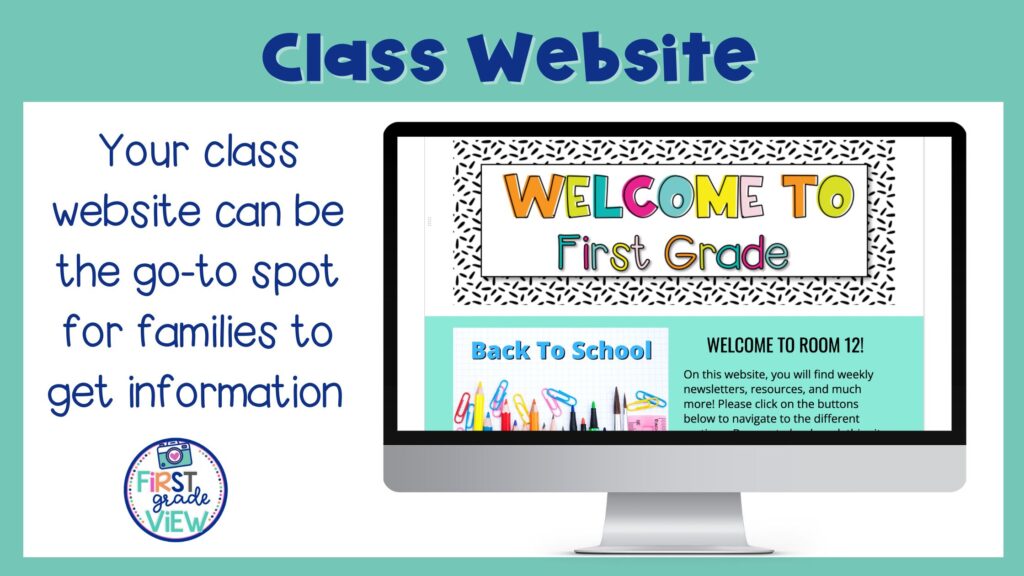
Tip 2: Class Newsletter
Weekly classroom newsletters are a total game changer! They supercharge communication, help teachers stay organized, and create a real sense of community for students and their families. Here’s how you can use them:
- Highlight upcoming events, important dates, and classroom updates.
- Recognize student achievements and showcase their work.
- Share curriculum themes or topics being covered in class.
- Include any volunteer opportunities.
- Request supplies you might need.
- Add a section of important reminders for families.
- Include a “Save the Date” section for upcoming events.
- Share any school-wide activities happening that week, like “Kindness Week.”
With a weekly newsletter, everyone stays in the loop, and you’ll see your classroom community thrive!
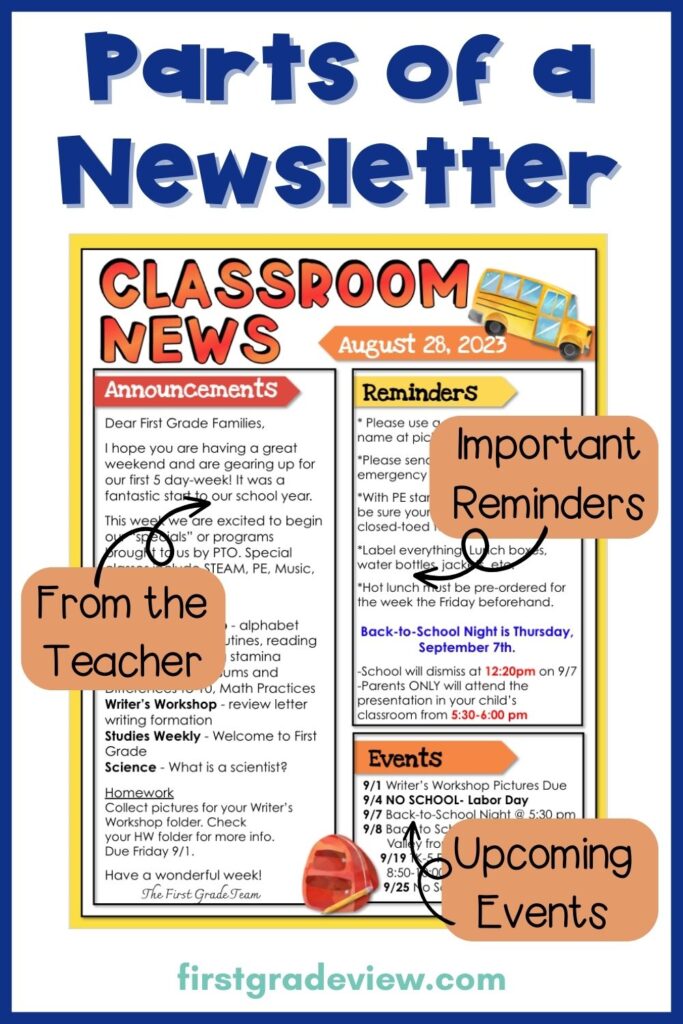
Parent Teacher Communication Tip 3: Weekly Email
Pairing your classroom newsletter with a weekly email is a winning combo! Your weekly email can include any additional information families need for the upcoming week that didn’t make it into the newsletter. Plus, it creates a consistent routine that parents can rely on. If they have a question during the week, they can simply refer back to your email. Need a quick parent response? It’s all on the same email thread, making communication smoother and more efficient. It’s a great way to keep everyone on the same page and make sure nothing falls through the cracks.
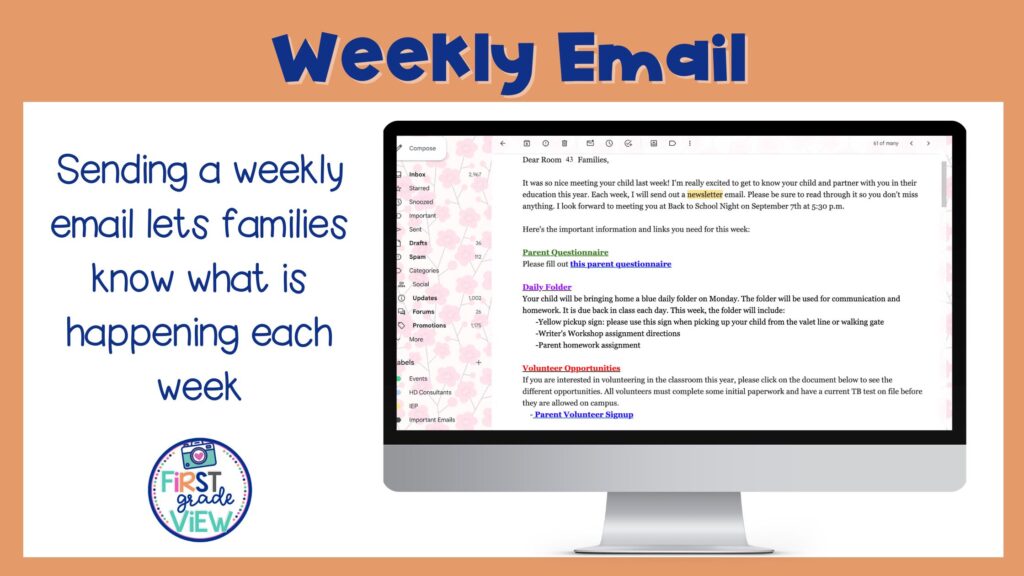
Parent Teacher Communication Tip 4: Communication Apps
There are so many communication apps for teachers out there, and choosing the right one can feel like picking a favorite candy! The trick is figuring out your main goal. Want to focus on student behavior? Class Dojo is your best bet. If you’re all about streamlined communication, Bloomz has you covered. Looking to share student work and progress? Seesaw is the way to go! Personally, I’m a huge fan of Seesaw, and so are my students. Parents love it too—it gives them a fun sneak peek into their child’s learning journey, where they can see, hear, and even comment on their child’s work. It’s a win-win for everyone!
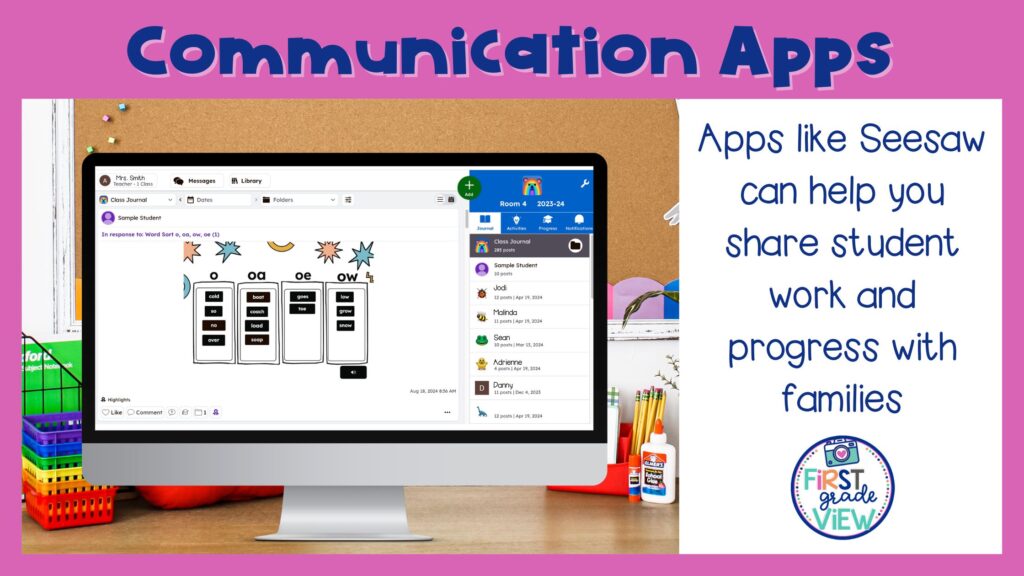
Tip 5: Communication Folder
Keeping parents in the loop about their child’s progress is crucial. The last thing you want is for a parent to say, “I had no idea how my child was doing.” One of my top tricks for this is sending home a weekly communication folder! It’s a big envelope that goes home every week filled with checked student work, graded assignments, and assessments that gets returned to school and reused each week. Parents get an inside peek at what we’re up to in class and how their child is doing. For instance, if we’re diving into time and a kiddo’s struggling with time to the half hour, I jot a quick note like “Please review ” on their paper so parents can see. It’s not just about sharing wins—it’s about teaming up to support each student on their learning adventure!

Incorporating effective communication strategies between home and school can truly make a world of difference in a child’s education journey. By implementing these five tips—whether through newsletters, emails, apps, or communication folders—you’re building a bridge that fosters understanding, support, and collaboration between families and your classroom. Remember, each interaction counts in creating a positive and informed learning environment! For more teacher tips and ideas, check out my other blog posts below. Let’s keep the conversation going!
You May Also Like:
Why a Weekly Classroom Newsletter is a Must-Have Classroom Tool

